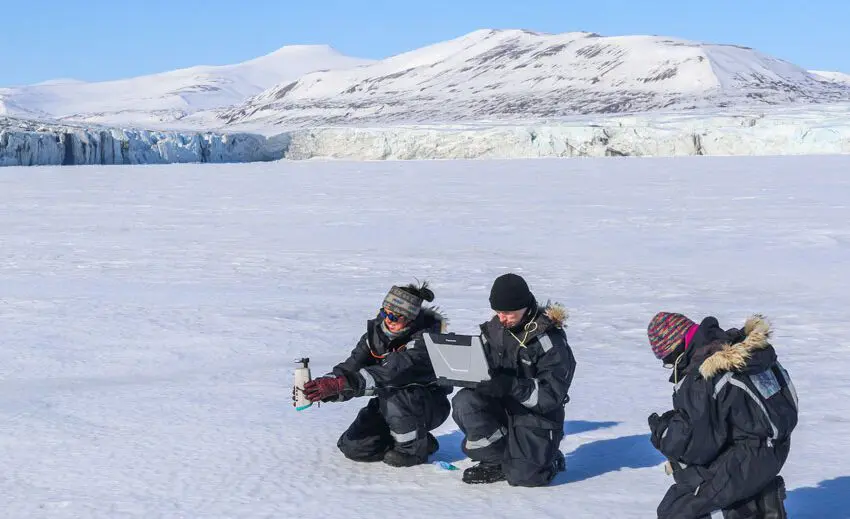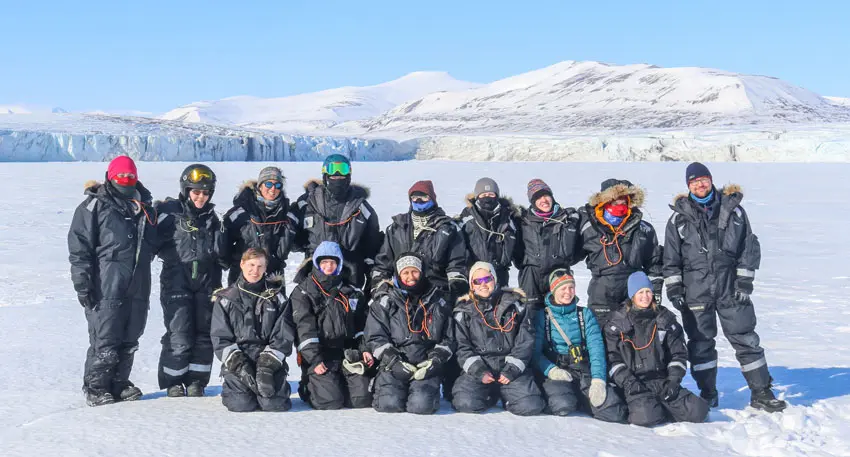Field trip with atmospheric pollution students

AT-331/831 students on fieldwork in Mohnbukta on the East coast. Photo: Richard Hann/UNIS.
Top image: AT-331/831 students performing fieldwork in Mohnbukta on the East coast of Spitsbergen. Photo: Richard Hann/UNIS.
The students in the UNIS atmospheric pollution course went on field trips to measure the impact of black carbon on the snow albedo. With the scooter season coming to an end, this was probably one of the last UNIS field excursions by scooter. Despite challenging driving conditions, all the sampling destinations were reached safe and dry so that we could take these amazing pictures!
9 May 2017
Last week, the students of the AT-331/831 Arctic Environmental Pollution: Atmospheric Distribution and Processes course went on three field trips measuring spectral surface albedo of snow and ice surfaces. Guest lecturer Alia Khan, a postdoc at the National Snow and Ice Data Center at the University of Colorado, introduced the students to the effects of black carbon on snow albedo. Black carbon is transported to the Arctic via long-range atmospheric transport processes and deposited on snow and ice surfaces. Once deposited, black carbon decreases the reflectivity of the snow and causes the snowpack to warm and melt, hence having a significant climate forcing impact.
Together with the course responsible Richard Hann, the students went in the field to take surface albedo measurements and dig snow pits at several sites, both urban and remote. Using a spectro-radiometer, they measured the albedo of snow and ice in the visible and near-infrared spectrum. The field trips destinations were at the local Mine 7, on Höganäsbreen near Svea and at Mohbukta on the east coast.
Despite difficult driving conditions in Adventdalen with open water pools and large icy areas, the students safely arrived at all planned sampling sites. On the last day in Mohnbukta, the students experienced perfect weather conditions and a spectacular background for their field work on the sea ice in front of the impressive calving glacier terminus. Last but not least, they found some evidence of a polar bear in the area!




